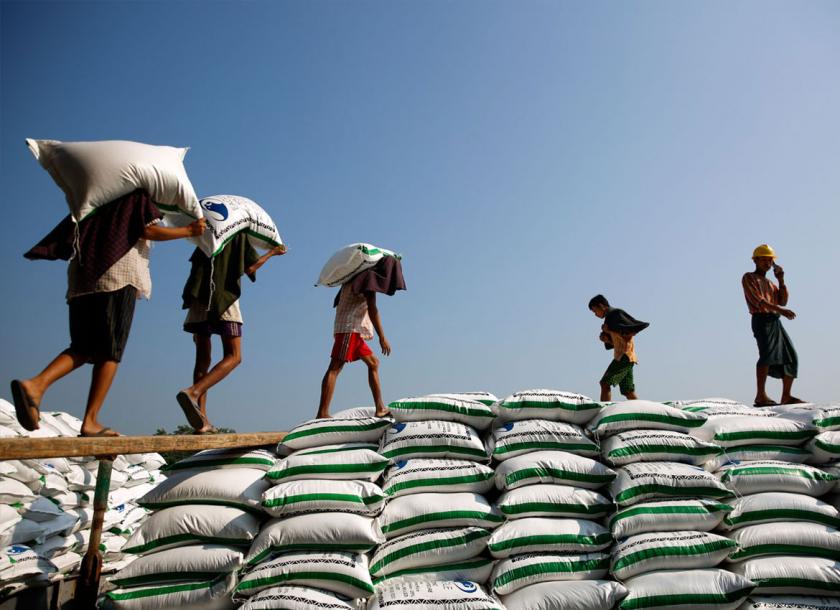CNI News
21 July 2022
As rice exports came to a halt recently, supply of the crop to Bayint Naung Commodity Exchange was low, according to the commodity exchange.
Currently, rice exports have halted completely and demand for rice is very low. Recently, rice was traded for domestic consumption, Tatmadaw rations and other organizations, Secretary U Than Oo of Bayint Naung Commodity Exchange told the CNI.
“As exporters have stopped buying rice, traders have to purchase rice at lower prices. So, it is not profitable for merchants in small towns who store rice for the market and as they cannot sell their rice at lower prices. Another factor is paddy has not been harvested at this time of the year in most areas except Mandalay and Madaya. Recently, we could sell rice for domestic consumption, rations for the Tatmadaw and the WFP. Exporters have stopped purchasing rice,” he said.
As the Central Bank of Myanmar has set the exchange rate at K 1,850 per US dollar, exporters suffered losses and stopped rice exports.
The processing of paddy.
Therefore, rice supply to Bayint Naung Commodity Exchange decreased to one-third of its usual volumes, according to U Than Oo.
“About 70,000 to 80,000 bags of rice were usually transported to Bayint Naung Commodity Exchange every day but the supply volumes dropped to 20,000 to 25,000 bags a day or about only one-third of usual volumes. Millers, wealthy farmers and dealers have not sold their rice to get more profits when the prices rise again. There is no rice in the hands of small farmers. As the harvest has started in Madaya, farmers there may have paddy in their hands. In other places, rice is held by people who are waiting for higher prices,” he told the CNI.
Maritime exports of rice have halted due to the gap between the official exchange rate and the market rates, but traders are still exporting rice at the border trade.
Rice exports through the border trade are still surviving as rice was traded not in US dollar but in Yuan there, Vice Chairman U Min Thein of Muse Rice Commodity Exchange told the CNI.
“We mainly exported broken rice to China and only a little rice. As the rice and broken rice trading is carried out not in US dollar but in Yuan, the border trade of rice and broken rice is carried out in Yuan, it was not seriously affected by the exchange rate set by the CBM. However, those who exported rice through the maritime trade suffered losses due to the gap between the official exchange rate of 1,850 per US dollar and market rates. We have not suffered the consequences as we exported rice in Yuan but those who exported rice through the maritime trade suffered losses because they traded in US dollars. So, they have stopped buying rice for exports. So, merchants from small towns cannot sell rice at lower prices and the demand is very low,” he said.
Rice exported to other countries was 25 marks rice and the price was as high as K 30,000 per bag but exporters could not offer more than K 28,000 per bag to export rice to other countries.
However, millers and farmers cannot sell rice to them at the lower prices and only a few of them who were short of cash sold rice to exporters at a loss, according to the commodity exchange.




